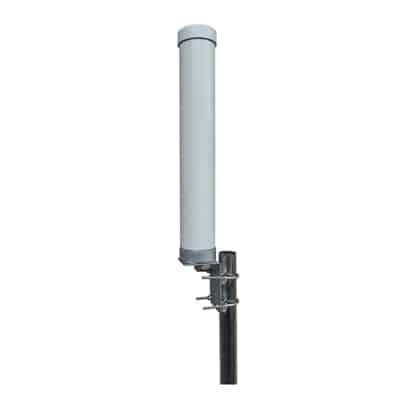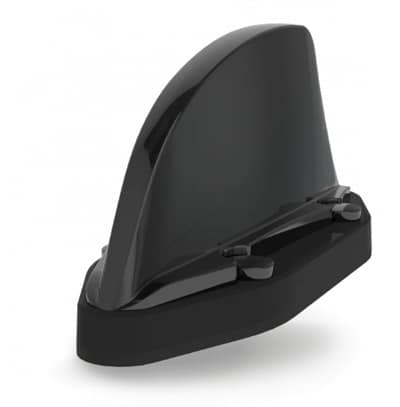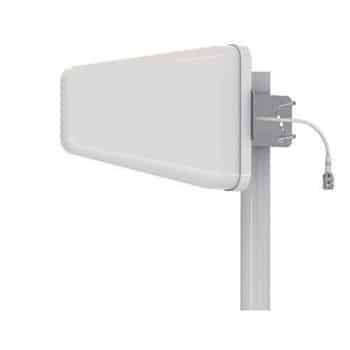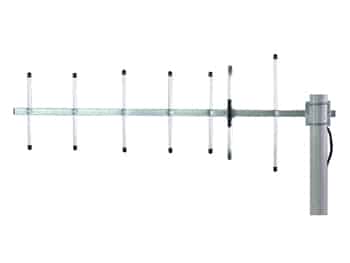The Internet has grown leaps and bounds in the last couple of decades. Now connectivity is not just about devices like smartphones and computers. The Internet of Things (IoT) creates vaster and complex ecosystems and applications. An important part of it is Low-Power Wide Area Network or LPWAN, as we will cover in this article.
Table of Contents
ToggleWhat is Low-Power Wide Area Network (LPWAN)?
Termed as a class of wireless connectivity networks in 2013, Low-Power Wide Area Network (LPWAN) covers a handful of wireless network technologies. Essentially, these wireless connectivity technologies have a standard communication range, power consumption, and cost. These characteristics make them an ideal choice for industrial and smart city applications.
The key characteristics of LPWAN technologies include:
- Extended range:
LPWAN technologies offer connectivity ranging from around 3KM to 50KM for urban and rural areas, respectively. Such a range between devices can make it a fit for indoor and outdoor applications where short-range wireless technologies such as Bluetooth, Wi-Fi, and Zigbee lack.
- Low-power consumption:
The low data rate is the key to LPWAN’s low power consumption in long-range applications. Many IoT monitoring solutions don’t need a massive data rate and thus can work with low-power cheap batteries for even 15 years.
- Saves cost:
Ease of network implementation helps eliminates significant hardware design complexities with low-cost devices. On top of that, most LPWAN technologies use the star topology eliminating reductant network architecture. LPWAN technologies can use licensed or license-free bands for your ideal use case.
What are the LPWAN technologies?
LPWAN technologies can be further divided into two primary categories based on their licensing needs. Here, Cellular connectivities such as NBIoT and LTE-CAT M1 work on licensed bands. At the same time, LoRaWan and SigFox operate on unlicensed frequency bands.
These technologies can further serve unique application needs with their characteristics such as range, bandwidth, transmission rate, consumption, frequency spectrum, and country coverage. Here’s the detailed breakdown of the most prominent LPWAN technologies to compare and understand:
- LoRa:
LoRa works on an unlicensed frequency spectrum of 868/915MHz with 125KHz bandwidth. It is specifically useful for lower-power needs where smaller packets are exchanged with unlimited messages a day. As such, it offers a data rate from 0.3 KBPS to 50 KBPS. LoRaWAN devices and gateways can be easily accessible and used in many indoor/outdoor applications. LoRa consumes the least power of LPWAN technologies.
- NB-IoT:
NBIoT is the frontrunner among the LPWAN market share, with LoRa being a closed second. NBIoT uses In band LTE licensed band, including unused 200 kHz bands previously used for GSM or CDMA. Compared to LoRaWAN, it offers a bandwidth of 180KHz and a similar 50Kbps data rate.
- LTE-M:
Next, the lesser popular licensed band LPWAN technology is LTE-M, operating at the same In band LTE. However, it offers a much higher bandwidth (1.08MHz) and a 1Mbps data rate. In addition, LTE-M also supports voice exchange in addition to data, unlike other technologies here.
- SigFox:
SigFox uses a proprietary technology operating on 868/915 MHz through a single operator across the country. What sets SigFox apart is the line-of-sight communication of 1,000 km with a 100bps data rate. However, SigFox currently offers coverage in 45 countries and has the least market share of the four.
What can Tesswave do for you?
Tesswave provide 100+ antenna products and you can contact us for antenna customized solutions, get in touch with us today to get a Free quote.
Get an Instant Quote
Get a FREE quote and we will contact you within an hour
What are the popular applications of LPWAN?
As the name suggests, LPWAN is the best-suited choice for applications where lower power consumption is needed to cover a vast area. Here are some of the most prominent industrial, smart city, and commercial applications of LPWAN:
1. Smart industrial facilities
The use of LPWAN for industrial applications is a booming interest. It can be used for monitoring wider facilities and controlling massive infrastructure. With the use of node devices and a set of gateways, the LPWAN can be used to watch over industrial operations and conditions.
It may include detecting fire breakouts, managing employees, water level monitoring, gas leak detection, and many more end applications. With the least maintenance and ease of implementation, LPWAN can help streamline operations for industrial facilities, supply chains, manufacturing setups, and factories.
2. Metering solutions:
Smart metering can help cities evolve and manage their energy, water, and gas supplies smoothly. The issue at hand for metering is theft, dues, and corruption in the consumption of these resources. LPWAN-based smart metering can help fight these issues with minimal manual effort from the administration.
3. Fleet management and operations:
Managing a fleet of vehicles can be burdensome and lead to inefficient logistics or even accidental conditions on hazardous sites. Fleet management with LPWAN can be quite helpful in areas where mismanagement of vehicles can be accidental, such as mining sites or ports. Streamlined fleet management will increase efficiency, save fuels, and optimize delivery timelines.
4. Street city infrastructures:
LPWAN smart city solutions can help control street lighting, address traffic congestion, and monitor vast structural health. A network of sensors and gateways can be installed in several modules across a vast area of the city. Such a chain of networks can manage smart cities with order and control. As an outcome, LPWAN will allow smart city citizens to live a life of health, convenience, and growth.
5. Water-quality monitoring:
Water-quality monitoring is a need of the hour with growing water pollution. Monitoring water-level in a vaster area across the line supply network is not feasible without LPWAN. LPWAN can help track the supply in every area and can identify pollutants on any particular node to safeguard the supply.
However, these are not the only applications that LPWAN is limited to. To manage and control extended regions, LPWAN can be used for more applications such as trash collections, air quality measurement, disaster management, and many more.
To sum up
LPWAN has unlocked a huge array of long-range and low-power IoT applications. Such long-range applications will streamline wide infrastructures leading to a better ecosystem of safety, connectivity, and growth. To give an idea, it is predicted that there will be 24 billion interconnected devices by 2050 with this growth rate of IoT.







